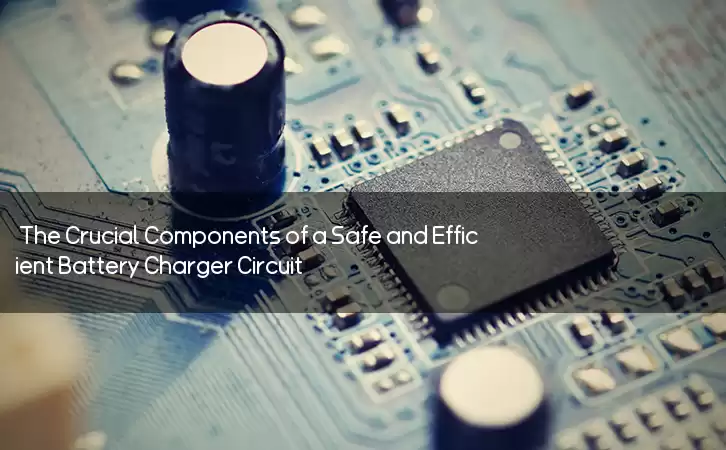Information Center
The Crucial Components of a Safe and Efficient Battery Charger Circuit
Published:2023-08-21 00:33:09 Author:Green WCND Views:75Battery Charger Circuit: A Brief Overview

In today’s world, electronic devices are ubiquitous and ever-present. Most of them operate using rechargeable batteries that need to be charged periodically. A battery charger circuit is a device or system that charges a battery by regulating the amount of current supplied to it. This article provides a brief overview of battery charger circuits and their characteristics.

Battery chargers can be either simple or complex, depending on the extent of their regulation and the sophistication of their control mechanisms. Simple battery chargers just supply a constant voltage to the battery while charging, whereas more sophisticated chargers may vary the charging voltage and current depending on the battery type, condition and charge level. However, all battery charger circuits have some basic functional blocks that enable them to charge a battery effectively.
The heart of a battery charger circuit is the power supply. The power supply takes the input voltage and converts it to the required charging voltage. The charging voltage is dependent on the chemistry of the battery being charged, such as lead-acid, nickel-cadmium, or lithium-ion. A good battery charger will ensure that the charging voltage is neither too low nor too high. A low charging voltage may not fully charge the battery, whereas a high charging voltage can damage the battery by making it overheat or explode.
In addition to the power supply, a battery charger circuit will usually include a battery detection and control circuit. This circuit senses the battery voltage, current and temperature while charging and adjusts the charging parameters accordingly. It also provides various protection functions, such as overvoltage protection, overcurrent protection, and thermal protection, to prevent damage to the battery.
The charging current is another important factor to consider in battery charger circuits. A higher charging current can charge the battery more quickly, but it can also damage the battery by causing it to overheat. Therefore, the charging current should be limited to an appropriate level using a current-limiting circuit. This circuit controls the charging current to prevent excessive current flow, ensuring that the battery is charged safely and adequately.
Another essential component of a battery charger circuit is the voltage regulator. The voltage regulator is responsible for ensuring that the charging voltage remains stable and constant, regardless of the variations in the input voltage or temperature. It is also responsible for ensuring that the charging current remains within the safe operating range of the battery.
Finally, the user interface is an essential aspect of a battery charger circuit. The user interface provides the user with information about the charging status of the battery, such as charging current, charging time, voltage, and percentage charge level. The user interface may also include features such as alarms and displays to make the charger more user-friendly.
In conclusion, battery charger circuits are an essential component of modern electronic devices that rely on rechargeable batteries. They are responsible for ensuring that the battery is charged safely and adequately, ensuring the longevity of the battery and the device. Battery charger circuits can be simple or complex and may include several functional blocks, such as a power supply, battery detection and control circuit, current-limiting circuit, voltage regulator, and user interface. The proper design and implementation of a battery charger circuit are essential to provide efficient and safe battery charging.
Power Adapter Design and Customization Guide for Portable Electric KettlesI. Common Design Types for Portable Electric Kettle Power AdaptersPortable electric ke···
I. Common Design Types of Power Adapters External Independent Type (Most Common) Design: A standalone adapter (e.g., "black brick") connected to the p···
Handheld Vacuum Cleaner Power Adapter Selection GuideIntroductionHandheld vacuum cleaners have become a mainstream tool for household cleaning due to their port···
Drill Power Adapter Selection Guide.drill-container { font-family: Arial, sans-serif; line-height: 1.6; max-width: 800px; margin: 0 auto; padding: 20px; } .dril···





